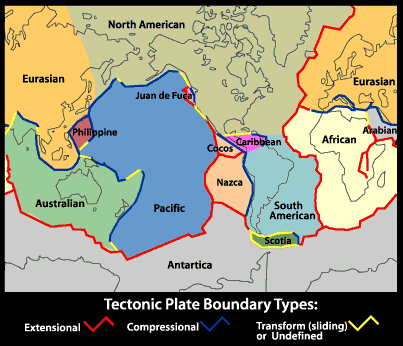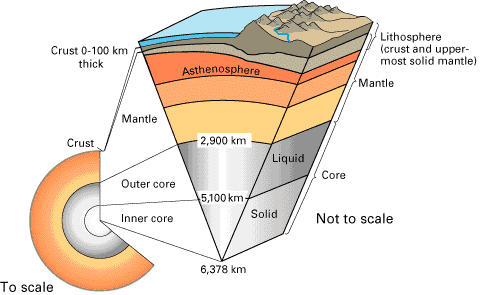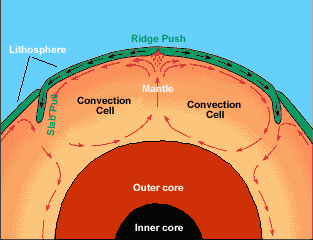Pages
2013-2014
This year middle school science launches into a study of our physical world and its laws! Carlisle Christian Academy's 6th, 7th and 8th graders are learning about chemistry, waves, forces and electricity. We love to get our hands dirty and minds engaged with experiments and experiences. Join us here on our blog to see what we are doing in class! You can contact Mrs. Tiday at ctiday@carlislechristian.org.
Monday, October 24, 2011
CH 5 Test, Study Questions
1.Explain how continents move, including sea-floor spreading
The continents are located on pieces of the lithosphere that float on the toothpaste like Asthenosphere. These pieces of lithosphere are called plates. The plates move around on the surface of the earth because the Asthenosphere is moving. Many scientists believe that it is moving due to convection currents ("hot things rise, and cool things sink"... remember).
The process that moves the plates is called sea-floor spreading. Sea-floor spreading is when the mantle is pushed up through the mid-ocean ridge and creates new sea floor. As the rock gets older, it travels along the sea-floor until it reaches a deep sea trench where subduction occurs and the rock flows back down to the mantle and melts. This movement of the sea floor pushes the continents along like a conveyor belt.
2.Label the parts of the earth
Remember that the mantle has 3 parts: lithosphere, asthenosphere (toothpaste), and lower mantle
3.Explain what happens at points where the plates touch.
Remember that the Transform Boundaries experience earthquakes, the Divergent Boundaries create valleys, and the Convergent Boundaries make mountains and volcanoes.
Thursday, October 20, 2011
Chapter 5 - Plate Tectonics Vocab
Here is the vocabulary from our chapter and a few pictures to help you to review :) Remember that this is all recorded in your notes just the way that I wrote it on the board. You have learned SOOOOO much! Good work :)
(Double click images to enlarge them)
(Double click images to enlarge them)
- Seismic waves - waves that travel through the earth when there is an earthquake
- pressure - the result of force pressing on an area
- crust - the thin outer layer of rock around the earth. ~5-40 km thick
- basalt - the main rock found in the crust on the ocean floor
- granite - the main rock that makes up the crust in areas of dry ground
- mantle - the three layers between the crust and the core
- lithosphere - the top layer of mantle under the crust. It is hard like the crust is.
- asthenosphere - the middle layer of the mantle. It is hot and moves lie toothpaste.
- outercore - made of liquid molten metal. Mostly iron and nickel.
- innercore - made of solid hot metal. Mostly iron and nickel.
- radiation - the movement of heat through empty space
- conduction - the movement of heat through solids
- convection - the movement of heat through liquids and gasses
- density - the amount of mass in a certain amount of volume.
- convection currents - the movement of warm particles up while cold particles move down which creates a flow of material
- continental drift - the movement of the continents as the lithosphere slides on the Asthenosphere
- Pangea - the name given to the large land mass that is formed if all continents are together in one area
- fossil - the remains of dead plants and animals. Fossil remains provide evidence for the concept of continental drift.
- mid-ocean ridges - long mountain-like ranges under the ocean where new sea floor is created by magma.
- sonar - technology that uses sound waves to map the ocean floor
- sea-floor spreading - the continual growth of the ocean floor at the mid-ocean ridges which causes the continents to move
- deep-ocean trenches - the location of subduction near the coastlines of the continents
- subduction - the return of the ocean floor to the mantle near the coastline of a continent
- plate - the broken pieces of lithosphere that ride on the asthenosphere.
- scientific theory - a proposed idea that takes evidences into consideration in order to solve a problem
- plate tectonics - the theory that explains how the continents are able to move on plates due to convection currents in the mantle
- fault – the space between two plates
- divergent boundary – the edge of plates that are moving apart
- rift valley – A place in Africa where the plates are moving apart and creating a valley
- convergent boundary – the edge of plates that are moving together
- transform boundary – the edge of plates that are sliding past each other.
Subscribe to:
Comments (Atom)




